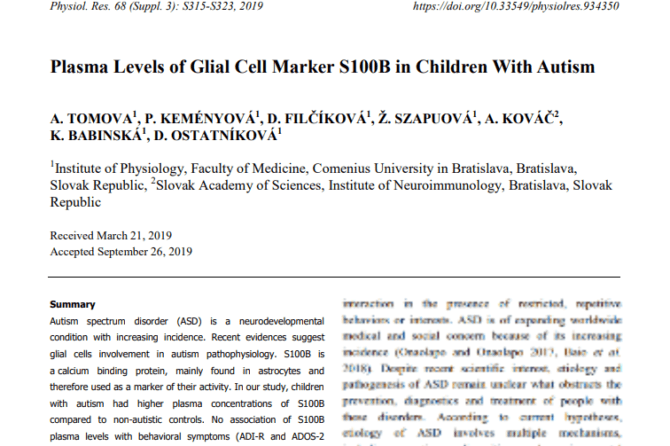
AUTHORS: Sashova Tomova, A., Kemenyova, P., Celarova, D., Szapuova, Z., Kovac, A., Babinska, K., Ostatnikova D.
ABSTRACT: Autism spectrum disorder (ASD) is a neurodevelopmental condition with increasing incidence. Recent evidences suggest glial cells involvement in autism pathophysiology. S100B is a calcium binding protein, mainly found in astrocytes and therefore used as a marker of their activity. In our study, children with autism had higher plasma concentrations of S100B compared to non-autistic controls. No association of S100B plasma levels with behavioral symptoms (ADI-R and ADOS-2 scales) was found. Plasma S100B concentration significantly correlated with urine serotonin, suggesting their interconnection. Correlation of plasma S100B levels with stool calprotectin concentrations was found, suggesting not only brain astrocytes, but also enteric glial cells may take part in autism pathogenesis. Based on our findings, S100B seems to have a potential to be used as a biomarker of human neurodevelopmental disorders, but more investigations are needed to clarify its exact role in pathomechanism of autism.
Physiol Res, 2019. 68(3) Supplementum: 315-323.


